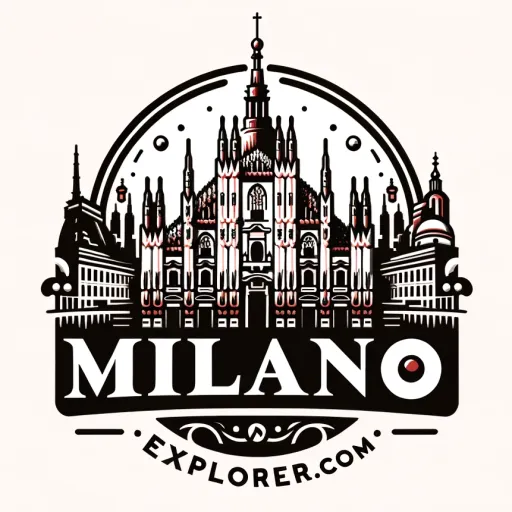Milan, a city renowned for its rich history in fashion and design, has developed a vibrant street art scene that captures the spirit of creativity and innovation. Murals and graffiti artworks have transformed urban landscapes, allowing artists to engage with public spaces in ways that are both diverse and thought-provoking. The city streets boast an array of styles, from classic tags and stencils to elaborate paintings that narrate the cultural pulse of Milan. These visual expressions offer a glimpse into the myriad perspectives that make up the city’s artistic identity.
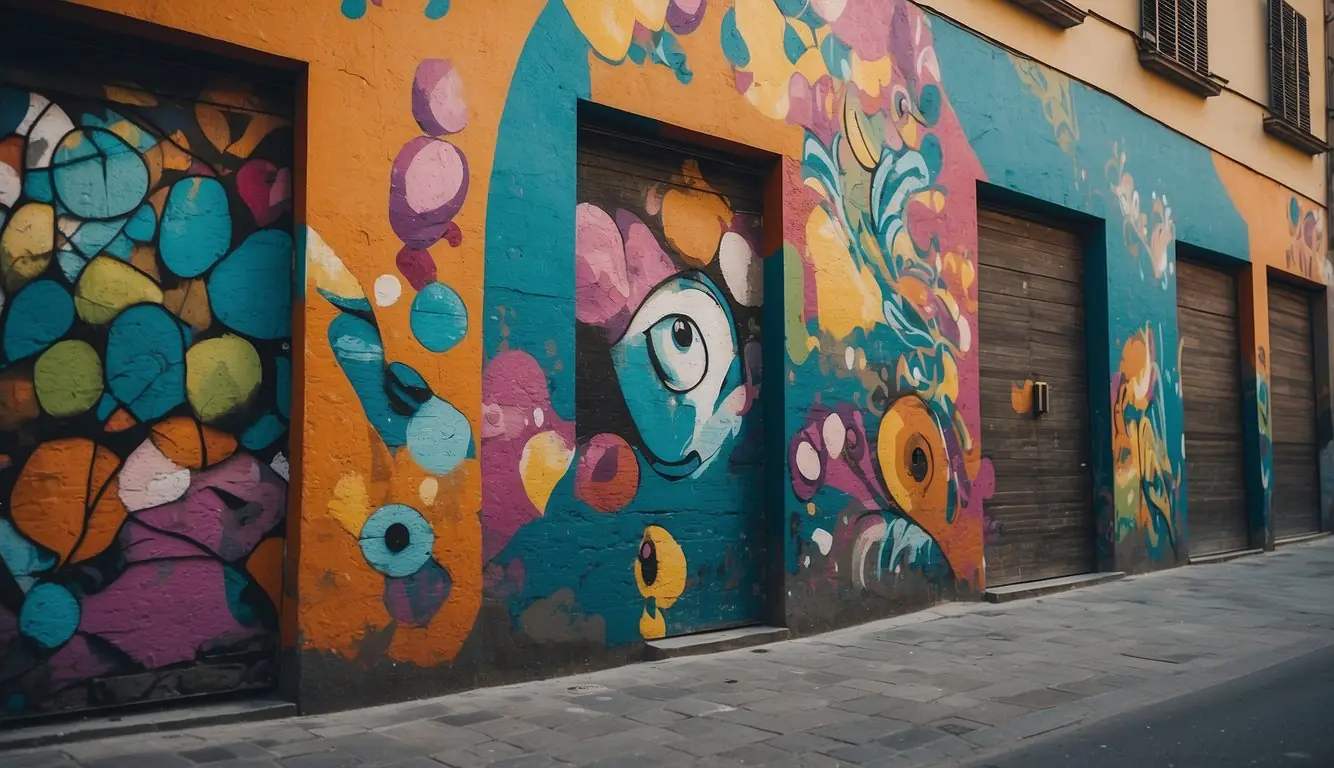
In the evolving narrative of urban art, Milan stands out as a dynamic gallery without walls. The street art in Milan is not just about aesthetics; it serves as a platform for artists to communicate with a wider audience, to challenge perceptions, and to reflect societal themes. It is an essential form of artistic expression that has the power to question, delight, and inspire those who encounter it. As we stroll through the streets of Milan, the interaction between the artworks and their environment is palpable, revealing an ever-changing canvas that belongs to the community as a whole.
Milan street art
Key Takeaways
- Milan’s street art scene is a testament to its artistic expression within public spaces.
- Urban art is pivotal in reflecting the diverse cultural landscape of the city.
- Street art in Milan enhances tourism and contributes to the art market.
History of Street Art
In Milan, street art tells a story of cultural shift and artistic innovation through its vibrant evolution and potent social impact. Let’s explore how this dynamic form of expression has shaped and been shaped by the city’s unique cultural tapestry.
Origins and Evolution
The genesis of Milan’s street art can be traced back to graffiti and tagging, which made their mark from ideas imported from New York’s counterculture in the 60s and 70s. These initial scribbles were a form of individualistic expression and territorial marking. Over time, what was considered vandalism began to transform. Styles diversified, with stencils, paste-ups, and large-scale murals emerging and burgeoning throughout Milan, reflecting the maturation of the art form.
Artists developed distinctive styles that evolved from simple tags into intricate works. Projects like the Fernet Branca Project illustrate this transition, where renowned duos such as Orticanoodles bring their creativity to a cityscape canvas, highlighting a blend of history with modern artistic sensibility.
Influence of Culture and Society
As it progressed, Milan’s street art became enmeshed with social commentary, with the city’s very walls turning into narratives that reflect societal shifts and cultural dialogues. The art not only beautified spaces but also provoked thoughts and sometimes even served as folklore for modern times.
Projects such as those captured by Giovanni Candida, better known as WallsOfMilano, show how street art interacts with the changing urban landscape. It often challenges the status quo, commenting on issues ranging from politics to the environment, cementing its role as a voice for those who may otherwise go unheard.
As we observe the streets of Milan, we witness a vivid confluence of historical influence and present-day societal context, where each piece of street art is a catalyst for conversation and a marker of time.
Street Art in Different Cities
In this exploration of urban tapestries, we’ll immerse ourselves in the vibrant street art scenes of three iconic cities: New York, London, and Milan. Each location offers a unique narrative where street art embodies the city’s spirit and cultural diversity.
New York: The Melting Pot
New York City’s streets are a microcosm of the world’s artistry, where every corner serves as a canvas narrating stories through murals and graffiti. Particularly noteworthy are the vibrant neighborhood of Bushwick in Brooklyn and the ever-changing 5 Pointz – though the latter no longer exists, its legacy continues to inspire the creative scene across the city’s five boroughs.
London: A Canvas of Diversity
London’s streets are marked by multicultural influences and the works of world-renowned artists such as Banksy. The Leake Street Tunnel near Waterloo stands as a testament to the city’s embrace of street art; and the eclectic neighborhood of Shoreditch transforms public space into bold statements of contemporary art and social commentary.
Milan: A Blend of Modernity and Tradition
Milan’s street art decorates the facades with a fusion of the city’s rich history and avant-garde outlook. Areas like Isola and the Navigli district offer mesmerizing visuals that bridge past and present. Through the Miart Gallery in the Brera district, street art finds a harmonious balance with the classical art that Italy is famous for, while the Street Art in Milan initiative showcases more than 190 street art masterpieces evoking modern sensibilities within traditional Italian contexts.
Notable Street Artists
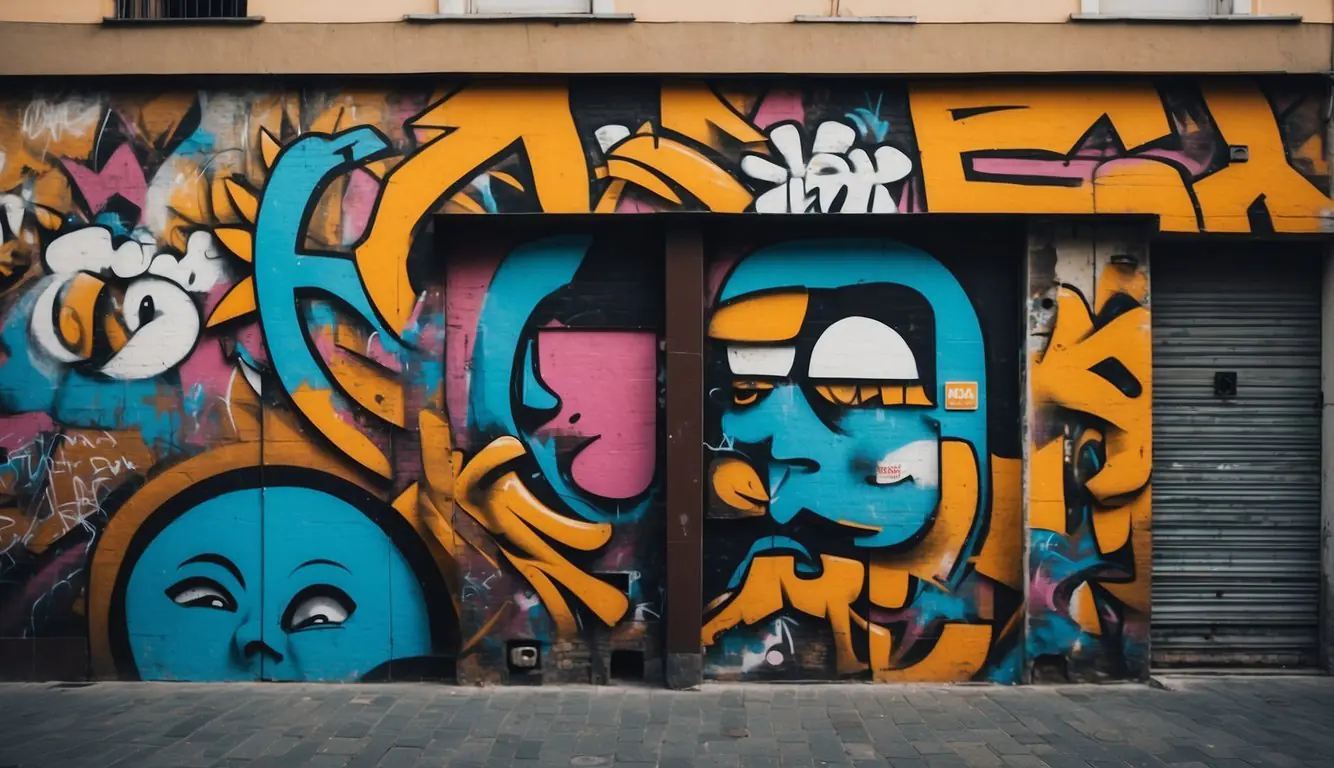
Street art in Milan reflects the city’s dynamic artistic heritage, showcasing works ranging from graffiti legends to contemporary muralists. Our exploration reveals the impact and evolution of street art through the vision of its most prominent artists.
Pioneers of the Urban Canvas
Milan’s street art scene wouldn’t be the same without Blu, whose large-scale murals critique political and social issues with a distinctive style. Similarly, Pao has been brightening the urban landscape with his playful, colorful creatures for years. These artists helped lay the groundwork for the vibrant Milanese street art culture and inspired new generations of artists.
Rising Stars in Street Art
Among the new talents, Orticanoodles boldly stands out, creating striking stencil works that can be seen as part of the Wallart project, a celebration of the orthopaedic hospital Gaetano Pini’s 140th anniversary. Meanwhile, Ozmo brings an intriguing mix of classic and modern influences, often incorporating iconic figures such as Leonardo da Vinci into his works, which enriches the dialogue between past and present in Milanese street art.
Styles and Techniques
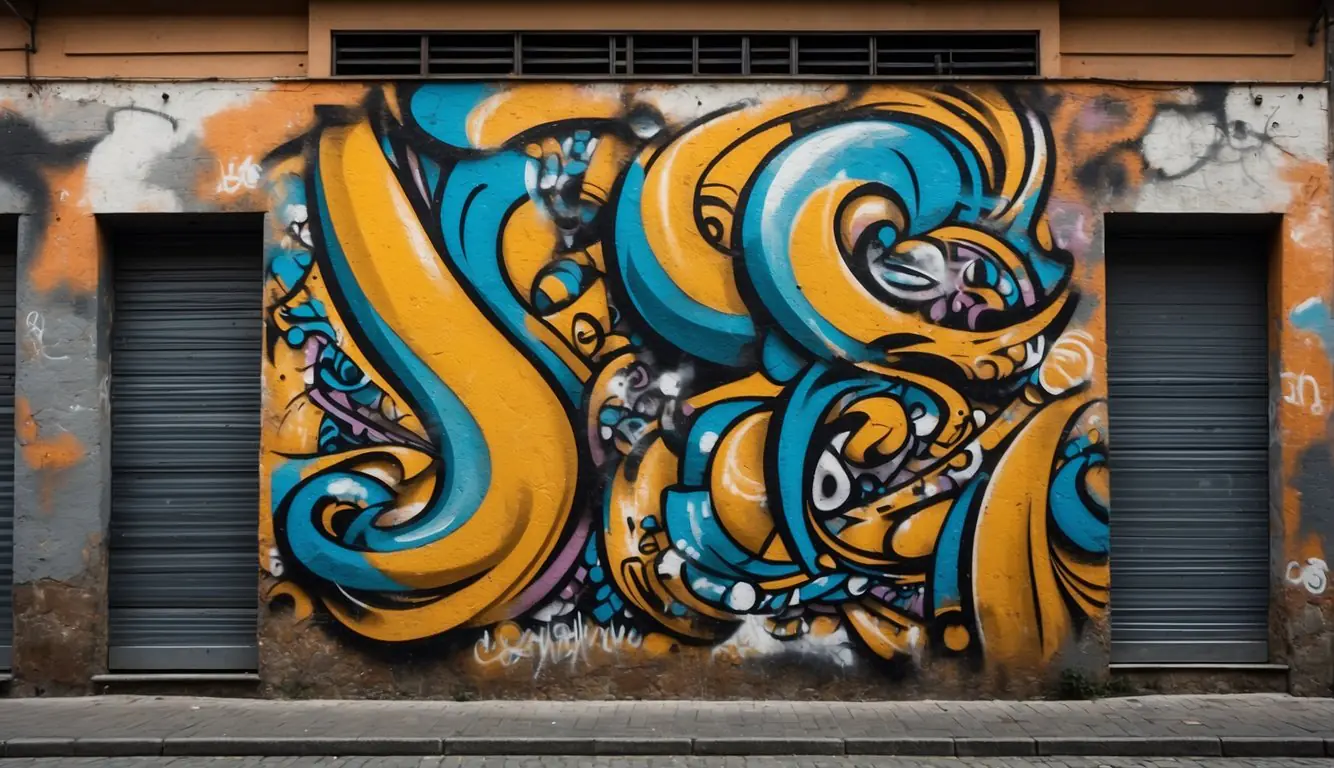
In Milan, street art evolves constantly, showcasing a diversity of styles and techniques. We see everything from intricate stencils to bold murals, each with their own unique approach to transforming the urban landscape.
The Art of Graffiti and Tagging
Graffiti and tagging represent the quintessential elements of street art. In Milan, we observe tags that serve as artists’ signatures and multifaceted graffiti works expressing personal or social messages. These creations often feature a complex interplay of lettering and images, with artists using aerosol cans to achieve sharp lines and vibrant colors. You can witness these styles in areas like Isola, where the interplay of historical architecture and contemporary art forms a dynamic visual tapestry.
Creating Murals: A Labor of Love
Murals in Milan can be seen as large-scale, intricate works that involve extensive planning and time. These murals often become collaborative pieces, where multiple artists contribute their skills to a single piece. For the creation of a mural, artists may employ everything from brushes to rollers, and even advanced techniques like stencil overlays for added depth and detail, blending powerful narratives with the city’s aesthetic. One such example is the Fernet Branca Project, showcasing Orticanoodles’ cutting-edge stencil work that encapsulates the essence of Milanese artistic innovation.
Interaction with Public Spaces
In exploring Milan’s vibrant street art, we uncover a complex dialogue between the art form and the public spaces it inhabits. The murals and installations not only enhance the visual landscape but also influence community dynamics and sociocultural discourse, particularly in neighborhoods like Lambrate and around landmarks like San Lorenzo Church.
Murals and Their Impact on Communities
Murals in Milan serve as more than just aesthetic enhancements; they are an integral part of the community’s fabric. Consider the Lambrate district, where large-scale murals contribute to a shared sense of identity and pride among residents. Projects in this area intertwine with local history and contemporary issues, fostering a community bond through public engagement with art. For instance, a mural near Piazzale Archinto acts not merely as a decoration but as a catalyst for conversation and a marker of neighborhood identity.
In areas like the historic San Lorenzo Church, public artworks create a visual dialogue with the past, offering a modern reinterpretation of the city’s rich heritage. These creative installations attract visitors and locals alike, amplifying the beauty of historic sites and encouraging a deeper appreciation for Milan’s cultural layers.
Legal vs Illegal Art
Distinguishing between legal and illegal street art is key in understanding its interaction with public spaces. Legal artworks often result from collaborations between artists and city initiatives, producing thought-out and impactful pieces that are designed to enhance and harmonize with their environment.
On the flip side, illegal art, such as the spontaneous works at Leoncavallo social center, demonstrates the tension between creative expression and legal boundaries. While unauthorized graffiti can be contentious, it also provides raw insight into the urban undercurrents and the voices striving to be heard. These unsanctioned pieces may lack official approval but can still ignite significant discussions and act as a barometer of public sentiment.
As we immerse ourselves in this artistic interplay, we explore not only the bold visual impact of street art but also its profound capacity to shape the psychological and social atmosphere of Milan’s public arenas.
Street Art and the Art Market
In recent years, we’ve seen street art transition from urban landscapes to the coveted walls of art galleries, where its intersection with the art market has introduced a new economic dynamic.
Gallery Representation and Sales
A select number of street artists have experienced a surge in mainstream acceptance, with prestigious venues like Wunderkammern Gallery Milano and Deodato Arte offering representation. In these spaces, street art is curated, preserved, and sold, a transformation from its ephemeral nature on the streets. Miart Gallery, situated near the esteemed Pinacoteca di Brera, hosts collections where street art’s vibrancy meets historical ambiance, bringing a fresh perspective to the art market. Similarly, Area35 Art Gallery and Ride Milano have become noteworthy for showcasing street artists, further blurring the lines between traditional fine art and urban creativity.
The Economics of Street Art
Street art, once considered an act of rebellion, has become a significant player in the art economy. We see this with the rise of entities like Solo, an initiative that celebrates street art within the commercial art world. Furthermore, ventures such as Milan Street Art Tours offer immersive experiences, attracting tourism and local interest which in turn increases the economic footprint. Areas like Corso di Porta Ticinese and Porta Ticinese have become hotspots where the presence of street art boosts local business, proving that this art form can have a tangible economic impact. Notably, Silbernagl Undergallery embraces this trend by integrating street art into their exhibits, acknowledging its influence and potential for returns in a market that continuously seeks fresh content.
The Role of Street Art in Tourism
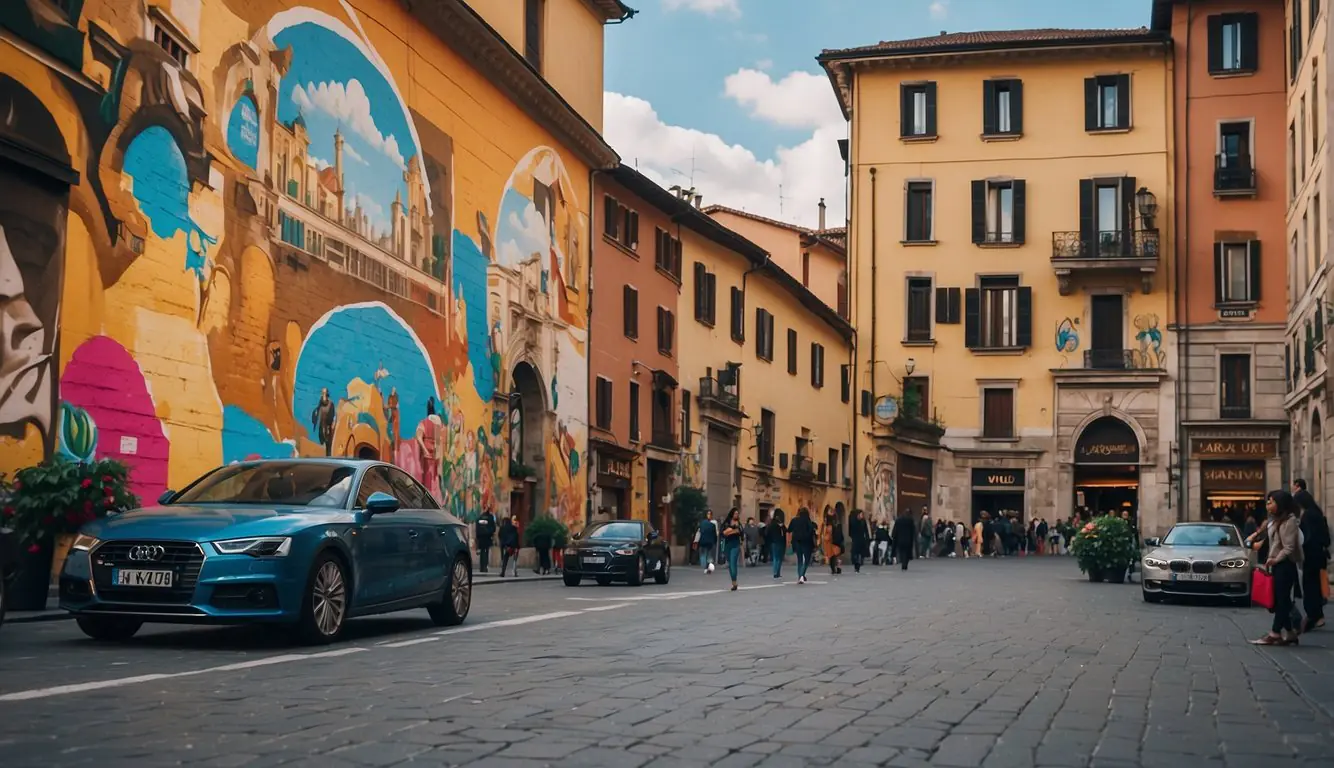
Street art has become an integral facet of Milan’s urban landscape, actively shaping the tourism experience. We see an increasing number of visitors drawn to the vibrant displays of art which not only embellish the city but also narrate its cultural dynamism.
Street Art as a Tourist Attraction
The Navigli district stands out as a canvas for contemporary street artists, transforming the area into a beloved tourist attraction. Here, a stroll along the canals unveils a succession of murals that breathe life into the historic waterways. These outdoor galleries offer tourists a glimpse into Milan’s artistic heartbeat, diverging from the traditional images of the fashion capital. The vivid walls capture attention, with every corner revealing a new visual story that encourages tourists to explore deeper into the city’s less conventional beauty.
Guided Tours and Workshops
Embracing this movement, guided street art tours have flourished, allowing visitors to fully engage with Milan’s urban art scene. These tours provide insights into the artworks’ origins and the artists’ intent, thereby offering a comprehensive understanding of the local street art culture. Workshops are another engaging facet, providing hands-on experiences in the Corso area, which help tourists connect with the city’s creative pulse. These activities not only enrich the tourist experience but also bolster appreciation for street art, supporting Milan’s status as a modern cultural hub.
Through the effective weaving of street art into the tourism tapestry, Milan has accentuated its allure as a city that celebrates both its rich history and its evolving contemporary art scene.
Conclusion
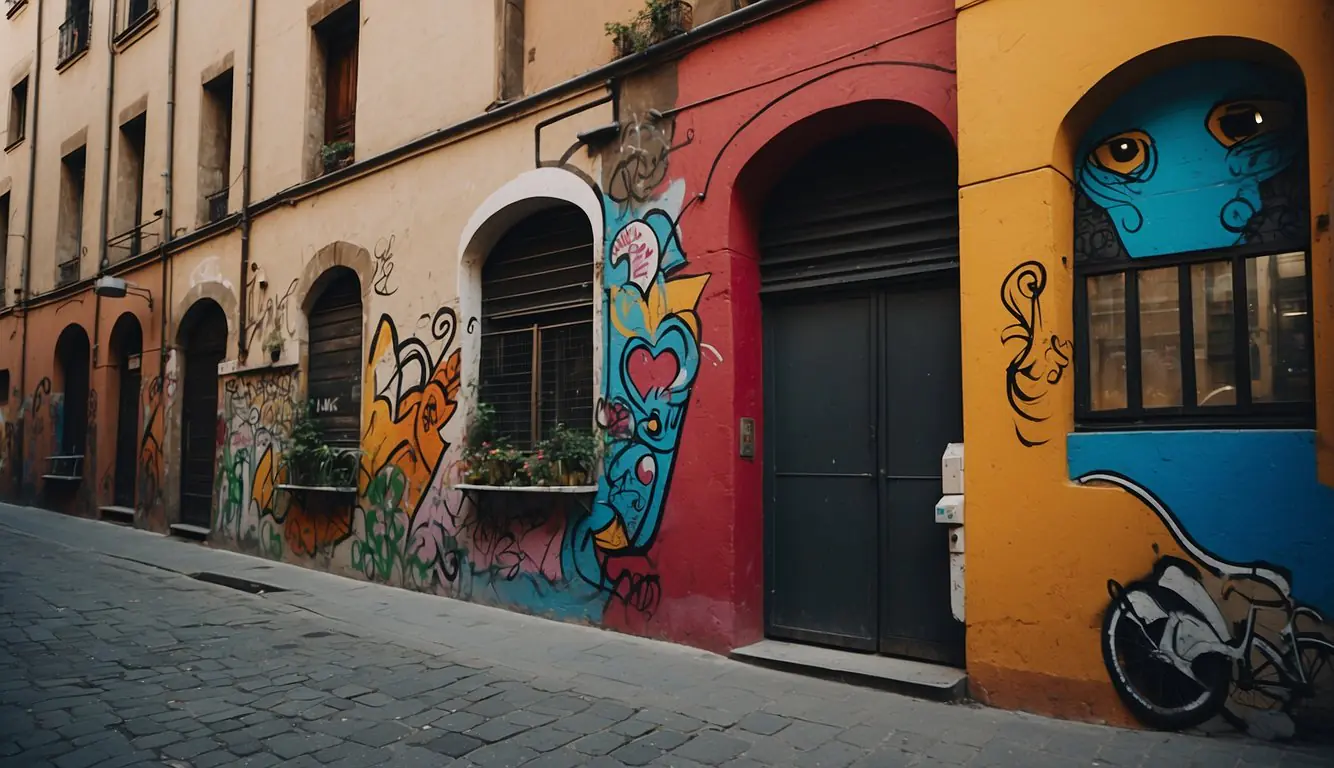
In Milan, street art represents more than just aesthetic expressions; it signifies the city’s cultural dynamism, weaving together its illustrious past and progressive future. It’s evident through the shared dialogues of urban art that it holds a mirror to the collective consciousness, reflecting diverse societal narratives.
We observe in various corners of Milan, from the Navigli to the historic district of Leoncavallo, the streets serve as an open canvas showcasing works that range from political statements to pure artistic endeavors. These murals aren’t mere decorations; they are critical components of the cultural significance of the city, narrating stories that might otherwise remain untold.
Looking ahead, the trajectory of street art in Milan appears promising. It’s an ever-evolving landscape, poised to further enrich the urban experience and inspire future generations. Future perspectives on this medium are optimistic, anticipating new methods of expression and evolutions of style that will continue to redefine public spaces.
As we embrace this creative journey, our collective appreciation for this form of art will undoubtedly deepen, reinforcing our understanding that street art is not just a transient trend but an integral part of our urban identity.
Frequently Asked Questions

In this section, we address common curiosities surrounding the vibrant street art scene in Milan, from the prime locations to find murals to the artists who create them and the cultural impact they’ve had on the city.
Where can one find the most notable street art in Milan?
Milan is adorned with an array of street art in various districts, but the Navigli district stands out for its stunning urban masterpieces. Walking along the canals, one can witness the rich blend of historical context with modern creativity.
Who are some prominent street artists in Milan?
Milan’s street art scene features both local and international talents. Names like Orticanoodles have left a significant mark, and you can witness their artistry at the Fernet Branca Project in the Fernet Branca distillery.
How has street art influenced Milan’s urban landscape?
Street art has transformed Milan’s urban aesthetic, creating vibrant marvels out of once bland spaces. The city’s atmosphere has been enlivened by these visual expressions, making Milan an open-air museum of contemporary art.
What types of street art are most prevalent in Milan?
From colorful murals to intricate paper sculptures, Milan’s street art comprises a variety of styles. Graffiti and large-scale paintings, often with poignant messages, are the most prevalent, showcasing the dynamic art culture of the city.
Can you recommend areas in Milan known for their street art culture?
Certainly, areas such as Isola, Porta Venezia, and Tortona are hotspots for street art enthusiasts. The Top 5 Places to see Street Art in Milan guide sheds light on the best areas to explore these urban galleries.
What has been the impact of street art on Milan’s cultural heritage?
Street art in Milan has revolutionized the perception and significance of public art, consolidating the city’s reputation as a progressive center for culture and artistic expression. It reflects and contributes to the city’s evolving cultural narrative, blending the old with the new.
